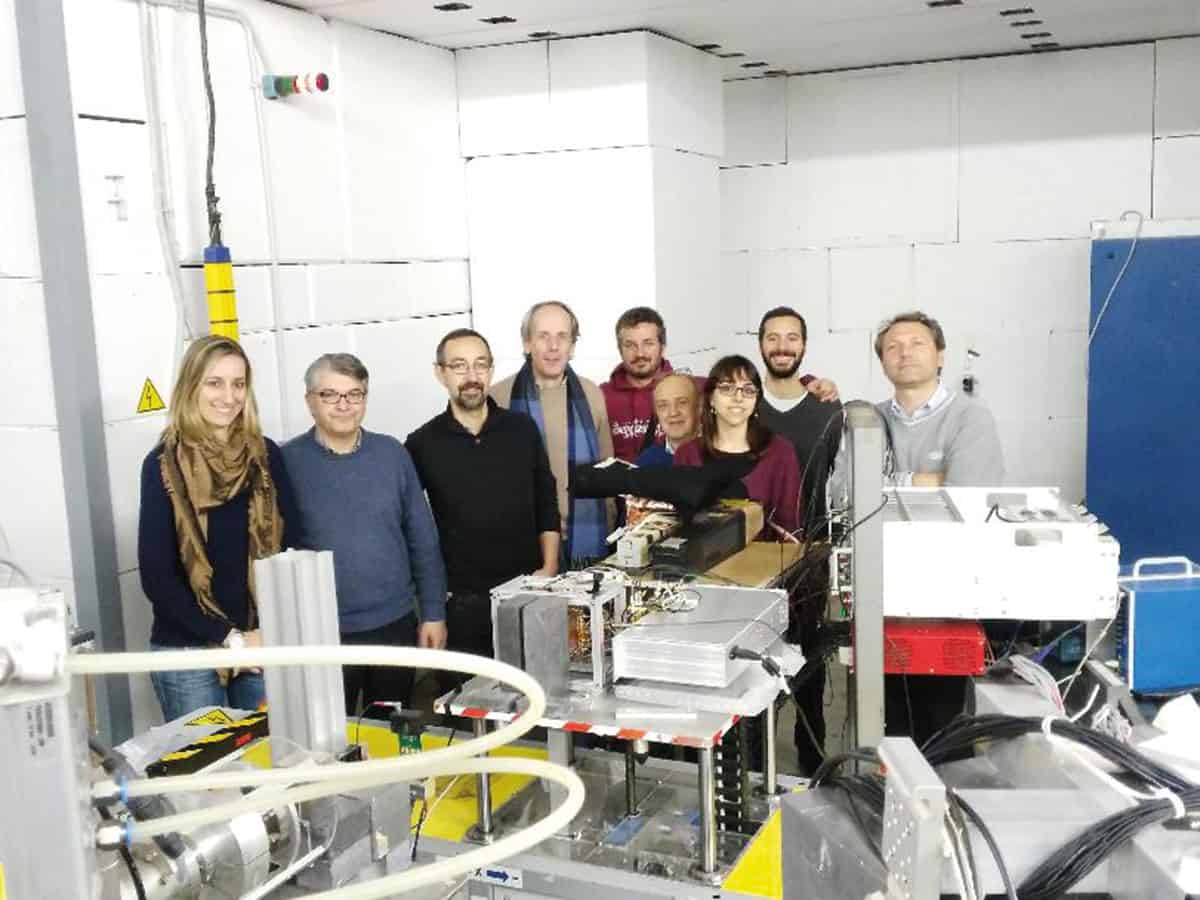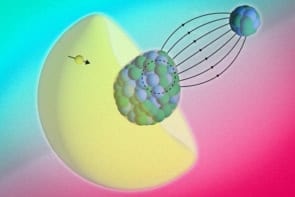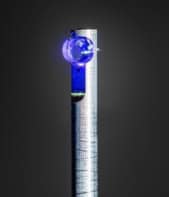An Italian experiment is to hunt for hypothetical particles that could carry a fifth force, as Edwin Cartlidge reports

Physicists in Italy are about to start up a new experiment designed to hunt for hypothetical particles such as the “dark photon” and carriers of a possible fifth force of nature. The Positron Annihilation into Dark Matter Experiment (PADME), located at the National Institute of Nuclear Physics (INFN) laboratories in Frascati outside Rome, will blast a thin diamond target with energetic positrons and record the mass of any exotic new particles produced in the collisions.
The group at Frascati will mainly target the dark photon, which is a heavy version of the ordinary photon. Predicted by various extensions of the Standard Model, it would interact with both dark matter and ordinary matter. Dark photons are not themselves usually considered to be dark matter, since they would carry relatively little mass and would tend to have decayed earlier in the history of the universe. But according to collaboration spokesperson Mauro Raggi of the University of Rome “La Sapienza”, they would provide a “portal between the visible and hidden sectors” and might also help solve other problems, such as the muon’s anomalous magnetic moment.
Dark photons are also being pursued at experiments in other laboratories, such as CERN in Geneva and the Jefferson Lab in Virginia, US. But according to Raggi, PADME will have the edge in being able to search for the “missing mass” of dark photons – allowing the particles to be detected even when they leave no visible decay products.
The experiment will involve recording collisions that happen when positrons from the Frascati lab’s linear accelerator collide with the electrons in a 100 μm-thick film of diamond. The resulting annihilations would normally yield two ordinary photons but, if the dark photon exists, just a single visible photon would be created. The mass of the missing particle could then be calculated by subtracting the measured 4D space–time-momentum of the single visible photon in each case from that of the incoming positron, plotting a spectrum of this missing mass and then reading off the mass value of the spectral peak.
The energy sweet spot
Raggi and colleagues plan to start taking data at the end of July and then run the experiment until the end of the year. For most of that time they will use positrons with the maximum energy provided by the linac – 550 MeV – to explore the biggest range of possible dark-photon masses (the highest mass being about 24 MeV). However, for a few weeks they also intend to operate at 283 MeV to maximize the production of particles weighing around 17 MeV.
That is the mass of a new particle that Attila Krasznahorkay at the Hungarian Academy of Sciences’s Institute for Nuclear Research and colleagues claimed in 2015 is generated when beryllium-8 radioactively decays. The Hungarian group made its claim after firing protons at lithium-7 targets and observing that the electrons and positrons created in the subsequent decays had an unusual angular distribution. Jonathan Feng and colleagues at the University of California Irvine then calculated that the particle could be a new type of force-carrying boson.
Although PADME is set up mainly to search for invisible decays, it also comes equipped with electron and positron detectors that could be used to check the Hungarian result. The measurements in this case will involve firing 283 MeV positrons at the diamond target and recording the number of electrons and positrons produced, before doing the same thing at slightly higher and lower energies. If the Hungarians are right, says Raggi, the number of collision products should drop away from the energy sweet spot.
Once the initial run is over, the group hopes to carry on running the experiment in 2019, says PADME colleague Paolo Valente of INFN, with the extra data lowering the threshold of observable coupling strength for dark photons and the putative 17 MeV boson. “We don’t have a big region of parameter space to explore,” he says, “but we are in a region that is hotter than others.”
Odds against
Another researcher on the hunt for dark photons is Dmitri Nikolenko of the Budker Institute of Nuclear Physics in Russia, who is developing a rival project at the lab’s VEPP-3 electron-positron storage ring that is due to switch on in about three years’ time. He points out that PADME will receive its positron bunches at quite a low rate – no more than 50 times a second – and so is likely to be much less intense than his VEPP-3 experiment. Nevertheless, he says that the Italian experiment might still yield “an interesting result”.
Nikolenko’s colleague at the Budker Institute, Igor Rachek, is more cautious. Despite having “no doubts” about the capability of the PADME collaboration and the quality of the equipment it has built, he thinks its chances of finding any exotic new particle are extremely slim. In fact, he puts the odds against such a discovery at “99.99%”.
To expand the region of parameter space that it can probe, the PADME collaboration plans to transfer its detector to Cornell University in the US after it has finished taking data at Frascati. Once in America, the group will be able to take advantage of the Cornell Synchrotron’s 6 GeV of energy and high intensities. Cornell’s Jim Alexander says that if he and his colleagues can get funding to add a new beamline, they hope to start firing positrons at a slightly modified PADME in the “early 2020s”.



